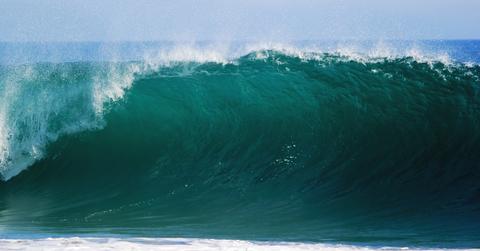Tidal Power Breaks World Record For Electricity Generation In Scotland
Scotland's Pentland Firth tidal power plant has achieved a new world record, generating 700 megawatt-hours in August. The MeyGen project still has more phases to go, meaning that the world record could be broken again later in the year.
Updated May 13 2019, 5:08 p.m. ET
Tidal power now has the ability to generate half of Scotland’s energy needs. One of the local hydropower plants in the Pentland Firth between the mainland and Orkney Islands recorded a world record of 700 megawatt-hours of electricity in August. Even better? More power is expected to come from this source as the process becomes more and more efficient.
The new record was achieved by turning on a third Andritz Hydro Hammerfest turbine (AHH) at the MeyGen project during the neap tide in late August. Neap tides are when the sun and moon are close together and it creates the largest tidal waves. The third turbine was offline due to system maintenance and there will be four turbines overall in this phase of the project.
As of a recent system update on July 10th, Pentland Firth’s MeyGen project has generated two gigawatt-hours since opening up last December. It’s the world’s largest tidal energy farm, and it will only get bigger as all phases of the project should be completed by 2021. As for this new world record, it may not last very long.
“The production performance from the installed turbines on the MeyGen project has been very good,” David Taaffe, MeyGen’s Director of Project Delivery said in a press release. “August proved to be a world record month, providing enough energy to power 2,000 Scottish homes from just two turbines. With yet another successful installation campaign expertly completed this week by the Atlantis operations team, we expect to continue to break records throughout the rest of the year generating both predictable power and revenue.”
The fourth turbine is scheduled to go online by the next neap tide, which will happen in late September. It will be different than the other AAH turbines, and components to build it were delayed. When these four turbines are online, Phase 1A will be complete with a six megawatt capacity.
Atlantis Resources, the company behind the MeyGen project, said back in May that this would be a record year for tidal power. They plan to install 600 megawatts of capacity in Scotland and one gigawatt worldwide as more companies are interested in the renewable source. Also at that time, Atlantis partnered with Hyundai Engineering and Construction for global development and are looking at tidal stream projects in Indonesia, South Korea, and France.
“Hyundai is seeking to expand into the construction of offshore energy projects in South East Asia and abroad, while Atlantis requires construction partners to build out our portfolio of tidal power projects in South East Asia,” Tim Cornelius, CEO of Atlantis, said in a statement. “We want to leverage Hyundai’s expertise to accelerate existing projects and to secure additional capacity both in the region and globally.”
Tidal power is a form of hydropower that has a very exciting future. It’s more reliable than sun and wind power due to the schedule of high tides. As efficiency in harnessing the energy improves, it will be another sustainable resource to lean on in our transition to clean power.
